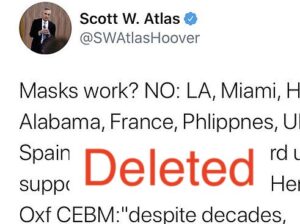Prior to March 21, most Americans had not heard of and probably could not even pronounce hydroxychloroquine, a drug normally used to treat malaria. Donald Trump, in a tweet that day, called its use in treating COVID-19, “one of the biggest game changers in the history of medicine”. Interest and controversy related to the drug exploded. Two months later a paper in the prestigious medical journal, the Lancet, seemed to have put an end to that particular fantasy. But, like a zombie, this particular idea is hard to kill. A study just released should be the shotgun blast to the head this idea deserves.
This therapeutic misadventure began in 2005 with a study suggesting the drug inhibited the first SARS virus in animal cells. At that point, the SARS epidemic was over. Since the disease no longer existed in humans, the study sparked little interest. Fast forward to January of 2020 when Chinese doctors were scrambling to control a new epidemic of a disease that looked like SARS with nothing to throw at it. There was no time for the animal studies that would normally precede the use of a drug in humans, much less clinical trials, but this was not normal. Under tremendous pressure, they began to use the drug in patients with the new disease. It seems that the Chinese doctors even began to believe the drug was helping, but there is no way to be sure without an experiment.
It is hard to know what motivated Donald Trump to take up the banner for this drug. Maybe it was a desperate need for good news to report in the face of increasingly bad news about the American pandemic. Reports of a financial interest appear to be unsubstantiated. Whatever the reason, Trump’s reputation and hence his ego became wrapped up in the success of the drug.
On May 22, the Lancet published an analysis of data from 96,000 patients, 15,000 of whom received hydroxychloroquine. The study found no benefit and dangerous side effects associated with the use of the drug. Almost immediately, the study came under heavy fire. That response was based on some numbers that were difficult to reconcile and a lack of transparency about methods that prompted a demand to review the original data. The company that held the data refused, citing privacy concerns. Two weeks later, the Lancet retracted the study. Within days, one of the authors lost his job. But there was nothing in all of this melodrama that refuted the results.
As I reported in my newsletter, a meta-analysis was released at almost the same time as the Lancet study showing exactly the same results. In fact, as far back as mid-April there was accumulating evidence that the drug was, at best, not helpful. Nonetheless, the Lancet retraction gave enough life to the hydroxychloroquine zombie that a large clinical trial of the drug was restarted.
Last week, the study that should have preceded all of this theater was finally released. Experiments conducted in hamsters and macaque monkeys, both of which can contract COVID19, demonstrated absolutely no benefit of this treatment. If they were done in the right, the animal study would have come first and the drug would never have been used in humans for this purpose. In fact, since I started writing this, the FDA has retracted its emergency approval of the drug for this disease. That should be the end of it, although Trump is still insisting the reality has it wrong.
The story of hydroxychloroquine should provide an object lesson in why science takes time and why drug companies are required to jump through all the hoops they do. It is not just because the government loves red tape. Sometimes, red tape saves lives.


